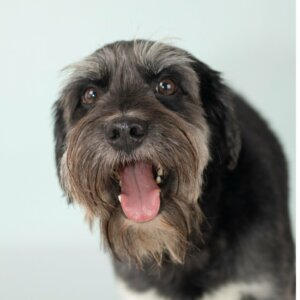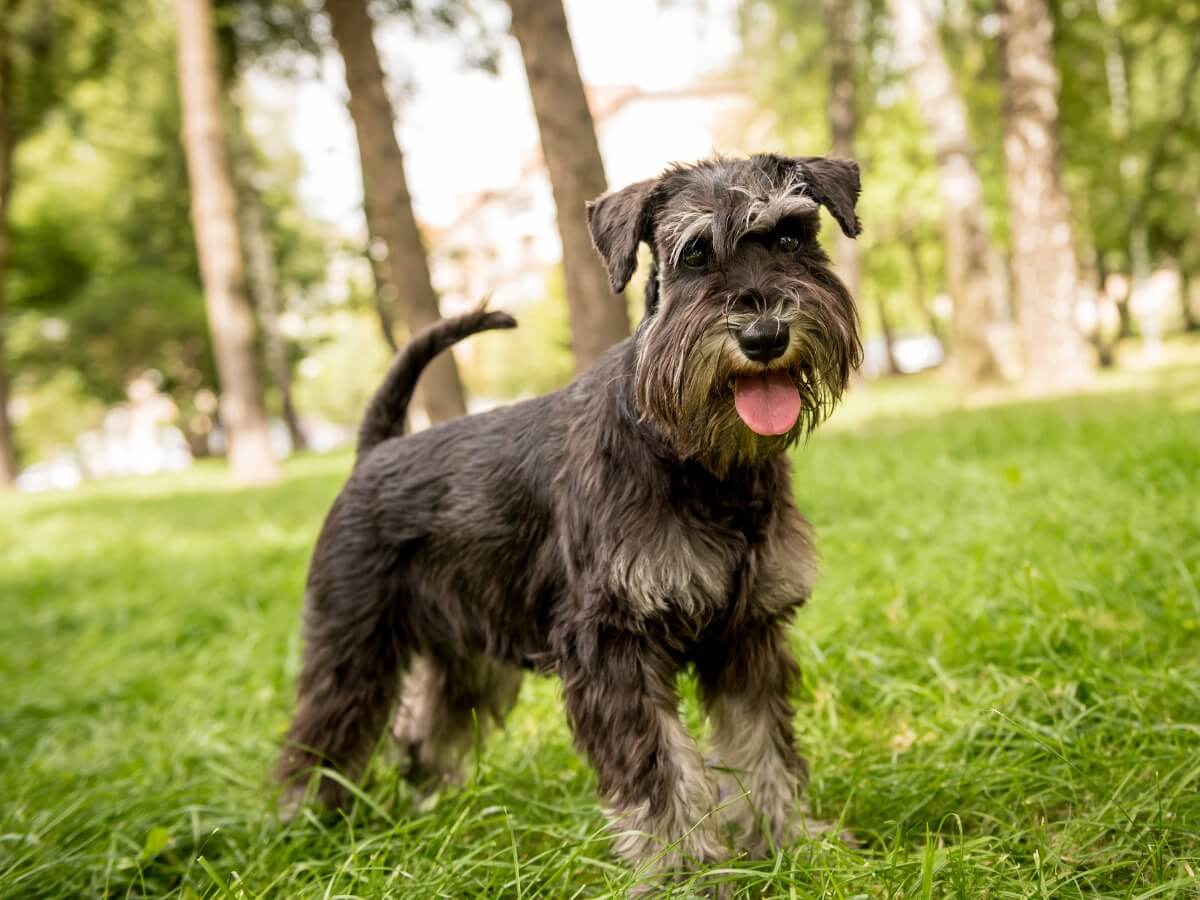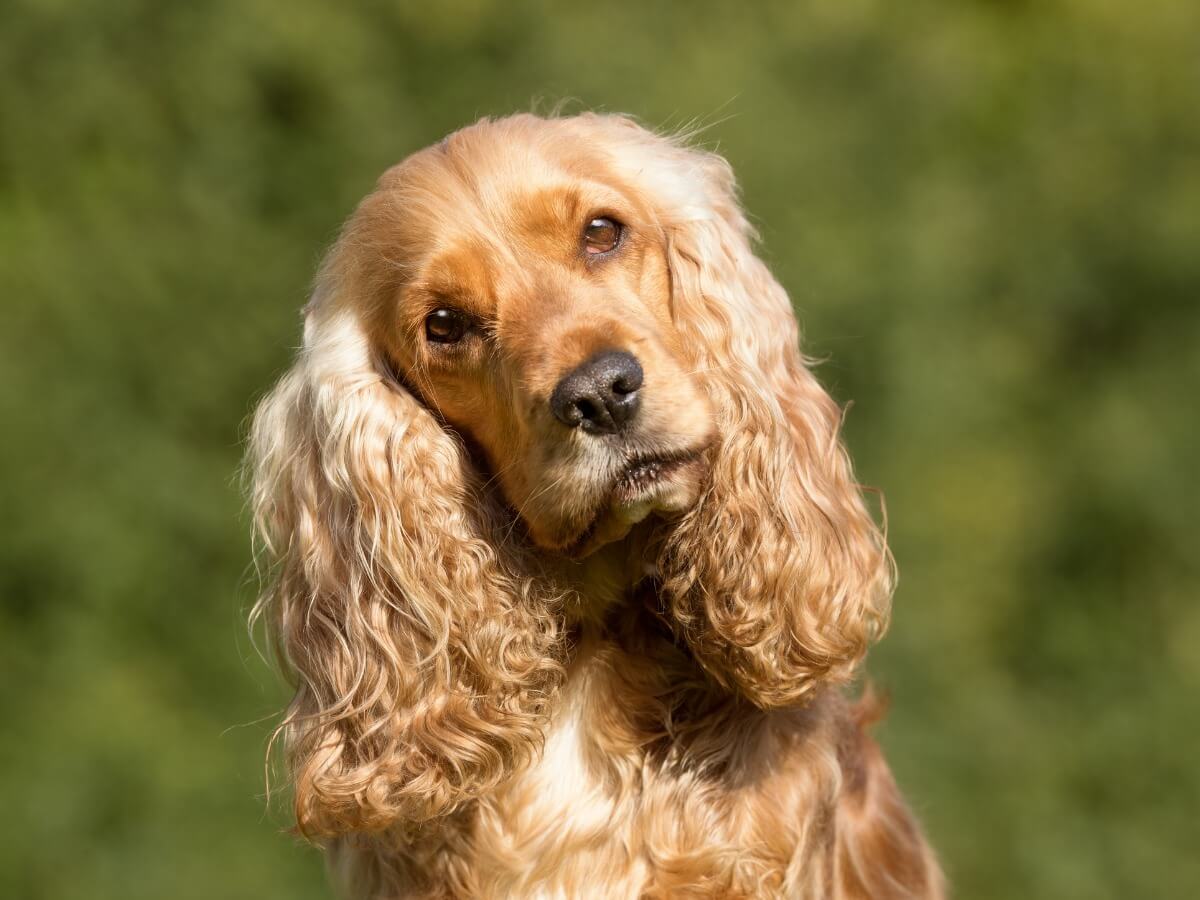The Schnocker: All About this Breed


Reviewed and approved by the biologist Samuel Sanchez
Also known as Mini Schnocker or Cockerschnauz, the Schnocker is a designer dog originating from the cross between a miniature Schnauzer and the American or English Cocker Spaniel. This meeting usually results in a good-natured and sociable dog, although some specimens are a little shy, especially with those they don’t know.
This dog usually inherits the well-defined muzzle of the schnauzer, along with its unique beard and moustache. It’s very athletic and medium-sized with a beautiful wavy coat. To keep this breed of dog busy, you need to give them plenty of distractions. Read on and find out all about this breed.
History
Professionals say that the Schnocker was first bred in the United States in the late 20th century. It’s a rare crossbreed and isn’t found in large numbers anywhere in the world. However, its parents are incredibly popular and universally recognized companion animals, and we’ll start off by showing you some of their traits.
The schnauzer
This German breed was originally kept as an all-purpose farm dog. Their versatility meant that they were dogs used for catching vermin, protecting property and keeping livestock under control.

The Cocker spaniel
This is a hunting dog that’s always eager to please, and it has a gentle and docile nature. While it makes a good pet, it’s important to remember its history as a working dog, as it craves both exercise and routine.

Physical characteristics of the Schnocker
The Schnocker is a striking hybrid that often inherits physical characteristics from either parent, which means it has quite a varied appearance. In general, its coat is usually wavy and of medium length.
The Schnocker is almost always completely black with a grey undercoat, a white patch on the chest and a splash of white on the toes, experts say. However, there are also some with a brown or white undercoat. Its coloration is unicolor, but it can also have markings on the face, chest, or paws.
The coat of this breed is rough, but very soft, and quite short on most of the body, although it does have longer hair on the legs, face, eyebrows, ears and feet. Its ears are droopy, its body is of medium-size and slim build, and it has long legs.
It weighs between 6 and 11 kilograms (13-24 pounds) and measures between 31 and 38 centimeters (12 to 15 inches). The average life expectancy of this dog is 13 to 15 years.
Behavior
This dog has a lot of personality. It loves its owners, children, other dogs and doesn’t like to be left alone. It’s very sweet, lovable, playful and has a lot of energy. Even so you must be careful with younger children, because the Schnocker can be somewhat hyperactive and jump on them.
This breed is easily trained. They’re very fast and outperform other bigger dogs. Some Schnockers bark a lot, but others only bark at noises or when they see someone strange. However, this is something that training helps to keep under control.
As for their training, the Schnocker is highly trainable and picks up learning cues faster than the average dog. They live to please and will always try to do what they’re told.
Schnocker health
In general, they’re healthy animals, although they can often get ear problems. This is why their ears should be cleaned once a week in order to avoid infections. In addition, you’ll have to brush their teeth at least once a week, as they also tend to develop periodontal disease. Among his other cares are also the ones we show you below.
Exercise and activity levels
Long daily walks in which they’re able to smell and explore to their heart’s content are vital. Once they have expended all their energy, they’ll be more than happy to snuggle up to you.
These dogs generally love to swim and will jump in any water they see, even in winter. Because of this, it’s always a good idea to carry a few towels for when you take yours out.
Grooming
The Schnocker doesn’t shed excessively, but you will need to brush them a couple of times a week to remove dead hair from their bodies. You should get them into the habit of cleaning and trimming their facial fur regularly, as they tend to get quite dirty (especially if they’re fed wet or raw diets).
It’s important to realize that it isn’t only a relatively new breed, but also that there aren’t many of them. For this reason, it’s essential that those who are dedicated to raise this unique breed have been certified.
Also known as Mini Schnocker or Cockerschnauz, the Schnocker is a designer dog originating from the cross between a miniature Schnauzer and the American or English Cocker Spaniel. This meeting usually results in a good-natured and sociable dog, although some specimens are a little shy, especially with those they don’t know.
This dog usually inherits the well-defined muzzle of the schnauzer, along with its unique beard and moustache. It’s very athletic and medium-sized with a beautiful wavy coat. To keep this breed of dog busy, you need to give them plenty of distractions. Read on and find out all about this breed.
History
Professionals say that the Schnocker was first bred in the United States in the late 20th century. It’s a rare crossbreed and isn’t found in large numbers anywhere in the world. However, its parents are incredibly popular and universally recognized companion animals, and we’ll start off by showing you some of their traits.
The schnauzer
This German breed was originally kept as an all-purpose farm dog. Their versatility meant that they were dogs used for catching vermin, protecting property and keeping livestock under control.

The Cocker spaniel
This is a hunting dog that’s always eager to please, and it has a gentle and docile nature. While it makes a good pet, it’s important to remember its history as a working dog, as it craves both exercise and routine.

Physical characteristics of the Schnocker
The Schnocker is a striking hybrid that often inherits physical characteristics from either parent, which means it has quite a varied appearance. In general, its coat is usually wavy and of medium length.
The Schnocker is almost always completely black with a grey undercoat, a white patch on the chest and a splash of white on the toes, experts say. However, there are also some with a brown or white undercoat. Its coloration is unicolor, but it can also have markings on the face, chest, or paws.
The coat of this breed is rough, but very soft, and quite short on most of the body, although it does have longer hair on the legs, face, eyebrows, ears and feet. Its ears are droopy, its body is of medium-size and slim build, and it has long legs.
It weighs between 6 and 11 kilograms (13-24 pounds) and measures between 31 and 38 centimeters (12 to 15 inches). The average life expectancy of this dog is 13 to 15 years.
Behavior
This dog has a lot of personality. It loves its owners, children, other dogs and doesn’t like to be left alone. It’s very sweet, lovable, playful and has a lot of energy. Even so you must be careful with younger children, because the Schnocker can be somewhat hyperactive and jump on them.
This breed is easily trained. They’re very fast and outperform other bigger dogs. Some Schnockers bark a lot, but others only bark at noises or when they see someone strange. However, this is something that training helps to keep under control.
As for their training, the Schnocker is highly trainable and picks up learning cues faster than the average dog. They live to please and will always try to do what they’re told.
Schnocker health
In general, they’re healthy animals, although they can often get ear problems. This is why their ears should be cleaned once a week in order to avoid infections. In addition, you’ll have to brush their teeth at least once a week, as they also tend to develop periodontal disease. Among his other cares are also the ones we show you below.
Exercise and activity levels
Long daily walks in which they’re able to smell and explore to their heart’s content are vital. Once they have expended all their energy, they’ll be more than happy to snuggle up to you.
These dogs generally love to swim and will jump in any water they see, even in winter. Because of this, it’s always a good idea to carry a few towels for when you take yours out.
Grooming
The Schnocker doesn’t shed excessively, but you will need to brush them a couple of times a week to remove dead hair from their bodies. You should get them into the habit of cleaning and trimming their facial fur regularly, as they tend to get quite dirty (especially if they’re fed wet or raw diets).
It’s important to realize that it isn’t only a relatively new breed, but also that there aren’t many of them. For this reason, it’s essential that those who are dedicated to raise this unique breed have been certified.
All cited sources were thoroughly reviewed by our team to ensure their quality, reliability, currency, and validity. The bibliography of this article was considered reliable and of academic or scientific accuracy.
designermixes.org. (s. f.). Schnocker. Recuperado 14 de diciembre de 2021, de https://www.designermixes.org/breed_info/205/schnocker.aspx
Dog Zone. (s. f.). Schnocker Breed Information, Characteristics & Heath Problems. DogZone.Com. Recuperado 14 de diciembre de 2021, de https://www.dogzone.com/crossbreeds/schnocker/
This text is provided for informational purposes only and does not replace consultation with a professional. If in doubt, consult your specialist.








